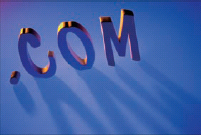The World Wide Web — the Web, for short — is a massive storehouse of information that resides on computers, called Web servers, located all over the world.
Each Web server hosts
one or more Web sites, and each of those sites contains dozens,
hundreds, or even thousands of documents calledpages.
You navigate from site to site and from page to page by clicking special words, phrases, or images called links, or by entering the address of the site or page you want to view. You do all of this using a special software program called a Web browser
Web Page
World Wide Web information is presented on Web
pages, which you download to your computer using a Web browser program,
such as Windows 7's Internet Explorer. Each Web page can combine text
with images, sounds, music, and even video to present you with
information on a particular subject. The Web consists of billions of
pages covering almost every imaginable topic.

Web Site
A Web site is a collection of Web pages associated
with a particular person, business, government, school, or
organization. Web sites are stored on a Web server, a special computer
that makes Web pages available for people to browse.

Web Address
Every Web page has its own Web address that uniquely identifies the page. This address is sometimes called a URL (pronounced yoo-ar-ell or erl),
which is short for Uniform Resource Locator. If you know the address of
a page, you can plug that address into your Web browser to view the
page.

Links
A link (also called
a hyperlink) is a kind of "cross-reference" to another Web page. Each
link is a bit of text (usually shown underlined and in a different
color) or an image that, when you click it, loads the other page into
your Web browser automatically. The other page is often from the same
site, but it is common to come across links that take you to pages
anywhere on the Web.
